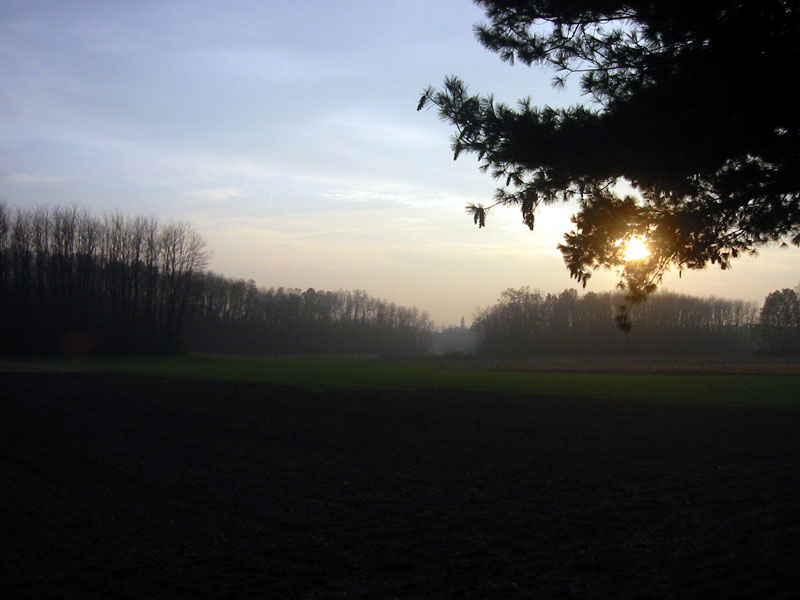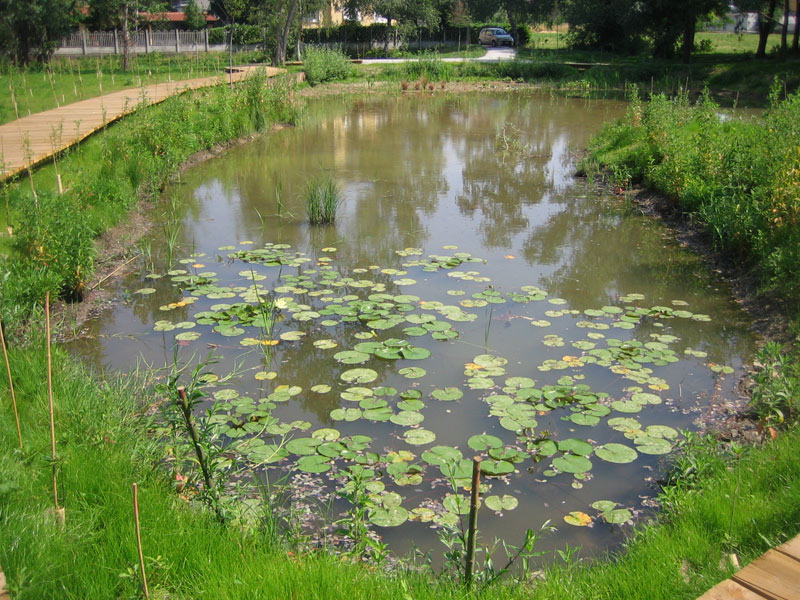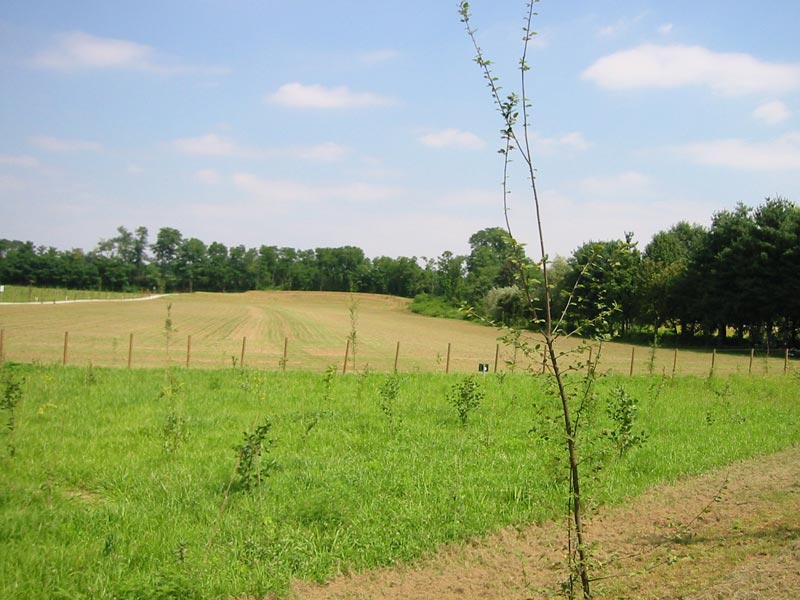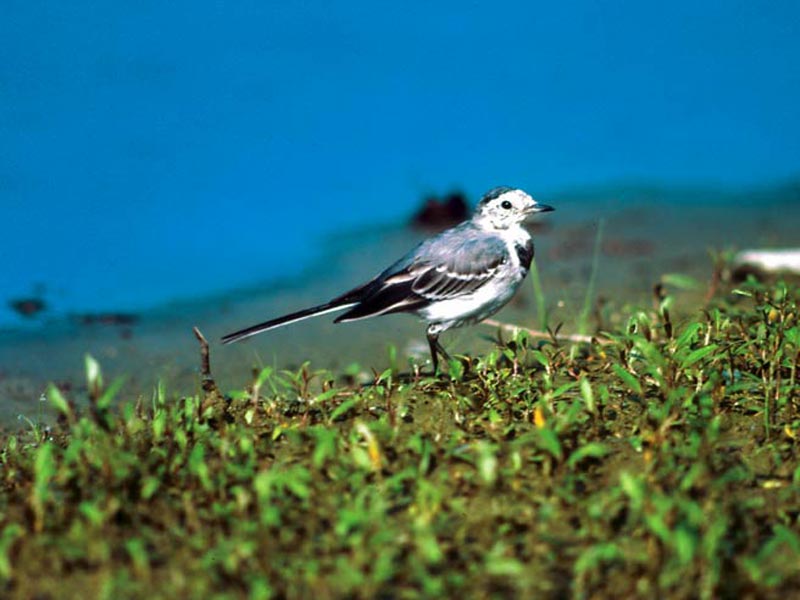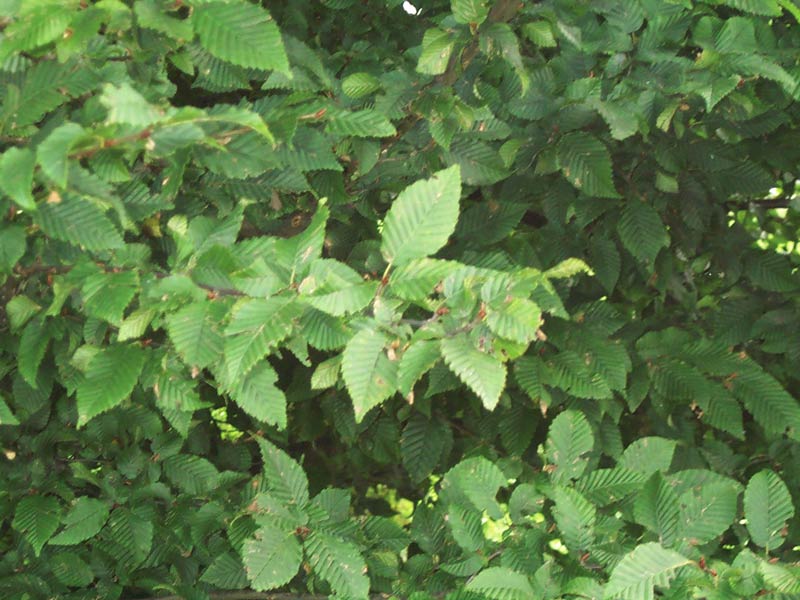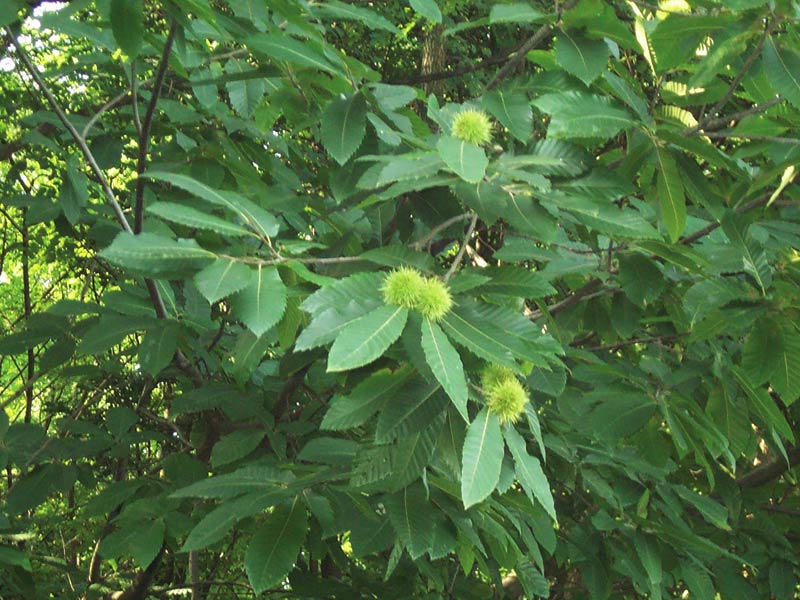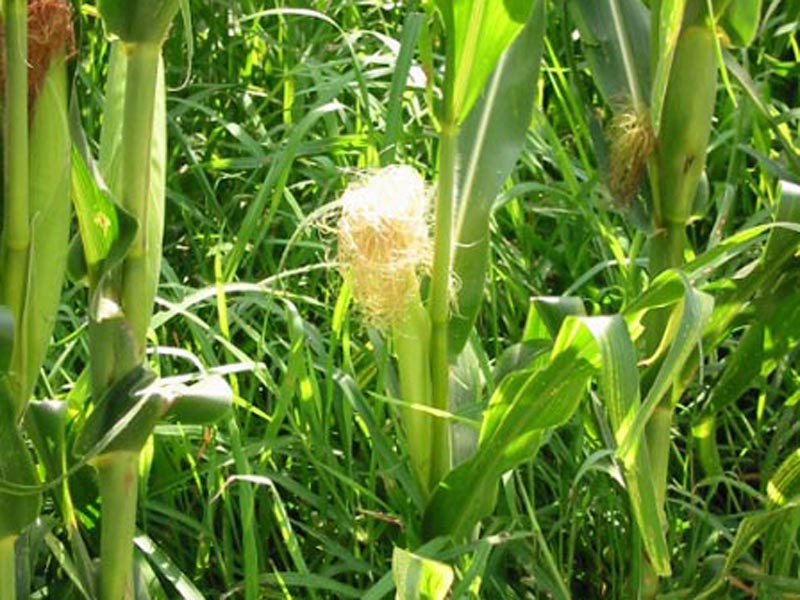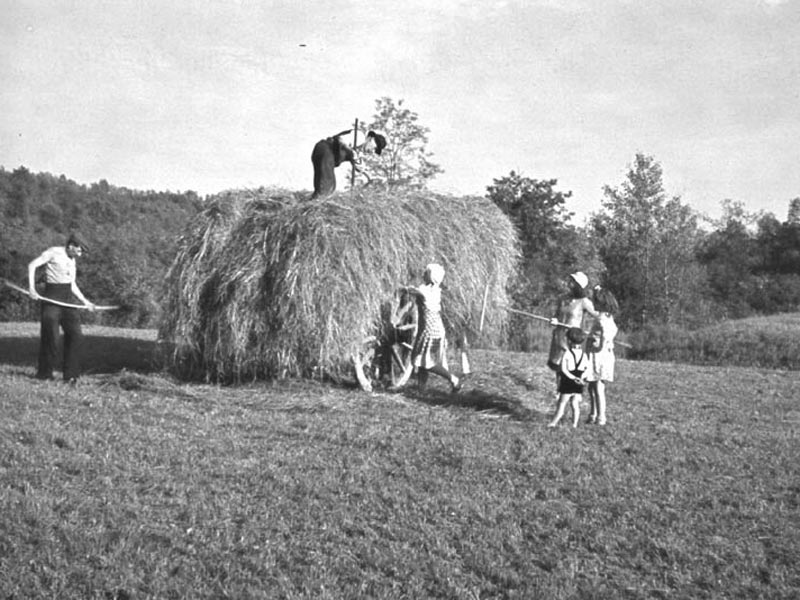Protected Area
Identity Card
- Land Surface Area: 1'929.80 ha
- Regions: Lombardia
- Provinces: Como, Milano, Varese
- Municipalities: Bregnano, Cadorago, Caronno Pertusella, Cassina Rizzardi, Cermenate, Garbagnate Milanese, Guanzate, Lainate, Lomazzo, Rovellasca, Rovello Porro, Saronno
- Establishment Measures: DGR n. 5311 24/11/1995 - mod. n. 33671/97
- Park Authority: Consorzio Parco del Lura
Lura Park and its crickets
There is an endless metropolis extending from Milan to Varese and from Como to Bergamo. The growth of the city has chaotically incorporated the countryside, villages, woodlands, and moorlands often without a strategic plan. This is the result of a period of development and economic boom which has led to a widespread wealth, but which has also led us to hand over to future generations a world dominated by grey, concrete, more or less fine dusts, and polluted waters: our children do not know crickets, cicadas, fireflies, and maybe not even ants, and without a doubt they do not know squirrels, woodpeckers, badgers.
Despite this, if you travel along Lura valley from Lomazzo, Bregnano, Cadorago or from the other Municipalities along the stream, the urban features are replaced by a rural atmosphere, by the green and peacefulness which have almost disappeared, at least in these places. And you will listen again to crickets, at least during the summer; at night, with a bit of luck, you may see some fireflies. There are no roads along the river: you can have a walk or go by bike. The miracle of silence and peacefulness can prevail for a while. There are woodlands where oaks and black locust trees grow; there are stretches of Scots pine woods (in Guanzate and Bulgarograsso); there are cultivated fields and morainic hills. There is a part of the upper plain of Lombardy preserving itself for future generations, as ecological corridor, as a thread between Groane Regional Park and Pineta di Appiano G.le e Tradate Regional Park.
Along a twenty kilometer course and in an area covering one thousand hectares, the territory of Lura is protected by ten Municipalities as Local Park of Interest for More Municipalities (Parco locale d'interesse sovraccomunale, whose acronym is "Plis"): eight of them belong to the Province of Como, the others to the Province of Varese, from Bulgarograsso to Caronno Pertusella. The Park establishment was the result of a free choice by the local administrations: nine of them, forming Lura Ambiente S.p.A., had already been collaborating for the sewer water purification.
Each Municipality elaborated its own part of implementation plan to provide the Park with certain rules, according to a strategic and joint project. They formed a Park Authority which is a Consortium: by joining their efforts, they transformed their financial limits into virtues and they invested their own funds to intercept different contributions from the Region, Provinces, and Bank Foundations. They have demonstrated that it is not that difficult to create a system and achieve sustainable aims: with a staff consisting of two persons and a 40 square meter office in the small town of Bulgorello, they have been investing since the year 2000 over two million Euros to create itineraries and picnic areas and to carry out reforestation and environmental recovery activities.
In a few years, the Park has created a network of over 16 kilometers of tracks giving the opportunity to visit almost the whole valley. In Saronno and Rovello Porro, the two Municipalities made an extra effort and purchased most of the land: in this way, the Consortium could carry out reforestation activities, create recreational meadows and cycling paths. Saronno has now its own big territorial park. There is also a huge green meadow (long as two football fields) with an arena where it is possible to organize important recreational events. Next spring the new bridge over the river will be open: it will give the opportunity to access the Park by bike directly from the town center. If you want to sight the squirrel, the dormouse, or the green woodpecker, you can use the old but charming bird snare that has been recovered by the Park in Pioda woodlands, between Cermenate and Cadorago.
Parco Lura starts every year a new initiative in order to improve its territory. For instance, it has recently opened the underpass under the busy "Novedratese" road, a heavy barrier crossing the Park. This year the underpass will be connected with the cycling path running across the woodlands on the opposite bank of the stream thanks to the creation of a light gangway where there was once a ford for wagons. Thanks to this passage, it will be possible to go from Saronno town center to Cadorago town center entirely following cycling paths and trails. The crossing of Rovellasca is still missing: the Park will work on it in the years to come.
Half Park is covered with woodlands and the other half with cultivated fields; it is not a virgin forest nor a nature reserve. It is a territory which is entirely cultivated and managed by the farmers and woodsmen who live on it. The Consortium is developing with them a relationship based on dialogue and mutual respect and support. As a matter of fact, their work is essential to protect the natural territory from the building sector; however, farmers must face the challenge of an increasingly more difficult and aggressive market, in which the opening of the frontiers and the Community support for the eastern countries make our lands no longer competitive. It is therefore necessary to adopt new agronomic models paying more attention to the domestic market, to quality production, and to the service offer to citizens. In particular, as far as services for the citizens are concerned, the Park can help and indeed helps the most sensitive rural entrepreneurs to open to the territory, offer accommodation to people, help maintaining the routes, clean the woodlands and the river. An itinerant weekly Rural Market was born: here local producers can directly offer their product at a competitive price, providing certainties on origin and processing.
Of course, problems exist: above all problems regarding the water quality, despite fish have come back, together with ducks and moorhens.
The stream Lura is too often a colored and stinking brooklet; at the same time, when it rains too much it overflows and floods whole districts and towns. Consorzio Parco Lura has no power nor resources to put it right, but it can help in finding out the causes and suggesting solutions to whom it may concern. It is working to this aim with a project financed by Fondazione Cariplo. Unfortunately, there are too many buildings around and uphill the Park, and they have been built in the wrong places. The morainic basins have been filled up with warehouses and trading centers; the city has discharged more and more water into the drains, taking it away from the water bearing layers and throwing it polluted in the river. The existing sewer network and the purification system are no longer able to face the sewage quantities reaching them when it rains.
In other words: when it doesn't rain, the water bearing layers feeding the river springs are dry, because in the places of natural drainage today you can park your car and go shopping. The river is thus fed only by the refluent waters coming from the purification plants. Although they comply with the laws regulating the water safeguard, instead of watering down in a stream, they end in a dry riverbed. This is the reason why Lura is stinking and colored. If rainfalls are abundant, since there are no areas enabling natural drainage, all the water directly goes in the stream together with the water coming from the city. And Lura blows up.
It is not easy to solve all these problems. It is necessary to give back to the river water in dry periods and detain it when it rains too much. But we need financial resources, administrative competence, and we must face technical and geographical obstacles that are sometimes insuperable. It is necessary to have project capacities able to combine technology and environmental safeguard, and, above all, good will to consider and face problems from a global point of view: for ourselves, for our community, for future generations.
Consorzio Parco Lura is having a try and today we begin to see some results.
Have a nice walk in the silence of the valley, listening again to crickets.
How the Park was Born
A stream, a green area of about 1,000 hectares, nine Municipalities, and a Consortium for the Water Improvement. These are the precious ingredients transforming Parco Locale di Interesse Sovraccomunale del Lura in a unique place. Guanzate, Cadorago, Cermenate, Bregnano, Lomazzo, Rovellasca, Rovello Porro, Saronno and Caronno Pertusella are the Municipalities situated in this protected area crossed by the stream Lura.
The first idea to protect the valley was born in 1975, when the nine Municipalities joined into a society, which with the financial support both from the regions and from the state and with their own funds created thirty kilometers of a great drain trunk line gathering refluents both from the factories and from the towns up to a big purification plant in Caronno Petrusella. The commitment is great, and it requires time and workforce.
Giacomo Castiglioni, Managing Director of Lura Ambiente, said that the idea of the Park was born in the 1980s, thanks to the passion of the administrators who worked at the water depuration. The first step was the homogenization of the environmental plans of the different administrations; then the Park's perimeter was defined and finally, in 1995, Regione Lombardia recognized the project.
At the beginning of 2000 a specific Consortium was founded to manage the Park, and the first direction board was appointed.
From 1997 to 2000 the Park was managed by the Municipality of Cadorago.
During all these years, many associations and voluntary groups helped the Park and the nature to avoid environmental deterioration which could ruin many of the wonderful landscapes which Lura Park wants to preserve. As a matter of fact, in the Park you can find hundreds of hectares of wood, peacefulness, animals, votive chapels, and ancient farmsteads.
This valley, uniting the provinces of Como and Varese, is able to reestablish the right balance between man and nature.
In the Middle of it... the Stream
The stream Lura gives the name to the Park: it springs in the Municipality of Bizzarrone, at the border with Canton of Ticino. It flows from the North to the South for 35 km before joining the river Olona which flows into the river Lambro. The stream Lura crosses the whole territory of the Park, touching the gentle hills which characterize an environment where the human presence is strong. It is characterized by meanders with medium flows and it is bordered by woods on both sides. In order to avoid - or at least limit - the possible floods, the Region of Lombardia has planned a flood control system to avoid what happened in the past to the towns of Saronno and Rho.
This danger is serious, and since only some kinds of wood are able to stand a flood, specialized technicians are studying a suitable solution to avoid floods and to safeguard the environment at the same time. For this reason, interventions are being studied to change for instance the overbuilding along the river, by recovering the naturality of the whole riverbed.
Fauna
The vegetation of Lura Park, characterized by thick woods alternating with meadows and fields has favoured the settlement of several animals. It is an ideal habitat for several species which are able to adapt themselves to such an environmental context lying nearby a urban area. Of particular importance in the Park is the presence of birds, among which sparrows, swallows, robins, great tits and some birds of prey which are typical of our territory, such as the little owl, the long-eared owl, the barn owl, and the kestrel; more common are doves, buntings, crows, blackbirds, pigeons, and wild pheasants.
It is much more difficult to sight the wild mammals populating the underwood of the Park: small-size carnivorous such as the fox, the stone marten, the weasel or rodents such as the dormouse and the badger.
It is possible to see the wild rabbit, the nice hedgehog which suspiciously moves in the underwood, to see squirrels jumping from one tree to the other and the rodents or the most common reptiles living in the typical meadows of the cultivated areas, also near the towns.
You can find...
| Mammals | ||||
| Wild Rabbit | Stone Marten | Hare | Squirrel | Vole |
| Weasel | Dormouse | Hedgehog | Badger | Fox |
| Birds | ||||
| Skylard | Woodpigeon | Chaffinch | Robin | Swallow |
| Pied Wagtail | Tit | Magpie | Woodpecker | Starling |
| Blackcap | Great Tit | Kestrel | Rock Dove | Turtledove |
| Crested Lark | Carrion Crow | Blackbird | Quail | Nightingale |
| Goldfinch | Crow | Red Kite | Goldcrest | Greenfinch |
| Redstart | Pheasant | Sparrow | Golden Oriole | Serin |
Flora
If you go along the course of the stream Lura, you can realize the
richness and the variety of the vegetation characterizing the surface
of the Park. The typical woods of the Prealps of Lombardy highlight the
balanced division between the wood and the agricultural landscape.
Locust trees, British oaks, and hornbeams together with rows of black
alders are spread along both banks of the stream from Rovellasca to
Saronno. There are also autochthonous species such as the pine tree,
the chestnut tree, the cherry tree, and the birch. The underwood is
rich too: hazelnut trees, elders, but also a variety of mushrooms,
herbs, ferns, and musks shape a characteristic and lively landscape in
every season. There are also cultivated fields, mainly with cereals.
There are also some exotic presences: in Guanzate there is a hill which
has been reforested with red oaks. There are also larches and black
cherries, which are American plants degrading and simplifying the
ecosystem.
You can find...
| Plants | ||||
| Silver Fir | Rum Cherry* | Cherry Laurel* | Lombardy Poplar | Goat Willow |
| Field Maple | Ivy | Hop | Aspen | Elder |
| Norway Maple | Barren Strawberry | Hazelnut Tree | Plane Tree* | Dogwood |
| Ash-leaved Maple* | Fern | Elm | Blackthorn | Solomon's Seal |
| Artemisia | Bracken | Black Alder | Butcher's Broom | Golden-rod Brindle |
| Nettle Tree | Poke Root | Nettle | Oak / Sessile Oak | Wild Service Tree |
| Birch | Alder Buckthorn | Guelder Rose | Oak / Common Oak | Honey Locust |
| Hawthorn | Ash | Periwinkle | Red Oak* | Spirea |
| Common Hornbeam | Spindle | Scotch Pine | False Acacia | Lime Tree |
| Chestnut Tree | Mulberry | White Pine* | Wild Rose | Traveller's Joy |
| Wild Cherry Tree | Rush | Poplar | Blackberry Bush | |
* Exotic species
Environment and Territory
Lura Park is situated in the upper plain of Lombardy at the mouth of the wide prealpine valleys. The geomorphological landscape has been shaped by the events of the glacial era which involved the Brianza. As a matter of fact, the territory of the Park, as well as the whole area of the province of Como, is characterized by a succession of geological strata originating from the last glaciations known by the experts in the field with the names of Mindel, Riss, and Wurm. The morainic cirques are the result of these glacial events: they arrive up to Lomazzo and Cermenate and they highlight the maximum expansion of the ice tongue present up to 10,000 years ago, when they began their withdrawal. The typical alternation of plains and hills and the geomorphology of the territory is due to the melting of the main glaciers. During the centuries, the stream Lura has been digging its course among the moraines towards the southern plains, where there are sediments dating back to the Quaternary. Great part of the soil has transformed itself during the millennia in red limestones.
Social Aspects
In the past the stream Lura was very important in the life of the
inhabitants of this territory. In the period between the two World Wars
some refuses were already released in the water, but the river was able
to depurate itself and to maintain its waters clean.
Unfortunately,
the post-World War boom damaged this balance between the watercourse
and the inhabitants of the towns crossed by it.
As a matter of fact, the factories along the water course started to overflow their refuses in the stream without any care.
The worst period of degradation of the stream began: individuals,
public administrators and factories used it as an open drain. The
damages are still evident nowadays, even if the first depurators were
built twenty years ago and at the same time the rules against pollution
came into force.
A great deal has been already done, and now the process of
environmental recovery is relentless. Of course, the ecosystem has been
deeply modified, and some years will be necessary to bring back a clean
watercourse, not polluted and populated by a correct aquatic fauna and
flora.
Considering the high density of population and the high
industrialization of this area, the situation is not so bad if compared
to the rest of Italy.
The efforts of the Park and of Lura Ambiente let us think about a better future.
The Water Project
The watercourse slowly developing from the border with Switzerland to the Olona is part of the history of the Municipalities and of the provinces it crosses. It was a strong and important presence in the past, but unfortunately in the latest 50 years it has become the stream where all the wastes of the towns situated along its course and of the factories of the hydrographic basin.
Recovering the stream has become the aim of nine Municipalities which have established in 1975 the Consorzio Interprovinciale di Risanamento del Bacino del Torrente Lura.
The Administrations which have taken part to this project are situated in the medium-lower portion of the stream: they are, from the North to the South, Guanzate, Cadorago, Lomazzo, Cermenate, Bregnano, Rovellasca, Rovello Porro in the province of Como, Saronno and Caronno Pertusella in the province of Varese.
The biological depuration system situated in the Municipality of Caronno Pertusella since 1987 is the most technologically advanced one in our territory.
Lura Ambiente S.p.A. aims not only at depurating the waters, but also at enhancing the value of the human resources: it therefore aims at obtaining a quality of the environment deriving from the reduction of the negative effects caused by the human activity.
It obtained the Quality Certification ISO 9002 of the Environmental Organization in 2000.
Lura Ambiente S.p.A. commited itself in the management of the drains and water systems of the Municipalities which already use the depuration system.
In particular, the Municipalities of Cadorago, Caronno Pertusella, Cermenate, Lomazzo, Rovellasca, Rovello Porro have entrusted to the company the management of the water and drain systems from 1st January 2001. From 1st January 2002, Guanzate did the same thing.
The Bordering Parks
The Park system in the Region of Lombardia consists of a national Park,
26 regional Parks and 25 Parks including more than one district. Among
the regional Parks there are fluvial parks, parks at the border with
the cities, forestal parks - both agricultural and mountain parks. The Parchi Locali di Interesse Sovraccomunale are particularly interesting areas which are directly safeguarded by
the Municipalities through the establishment of the Park and of its
perimeters on the Regulation Plan. These Parks, recognized as such by
the Region of Lombardia, work as great ecological corridors within the
largest "System of the Protected Areas".
Lura Park is an ideal connection among three different protected areas which have been established by the region:
- Pineta di Appiano Gentile - Tradate Regional Park
A big forest of 4,000 ha situated in the west of the Lura, where Scotch pines, oaks and chestnut trees alternate: a rather unusual landscape in our plain. It is the realm of the red squirrel, the woodpecker and the buzzard. Between the provinces of Varese and Como, it is the largest protected area in the high plain of Lombardy. Here it is possible to walk for hours in the wood without meeting settlements, and it is possible to feel far from the city, without climbing the mountains. - Groane Regional Park
It is situated in the south-east of the Lura, and it is the second park to be established in Lombardy (1976). This area is situated among houses, palaces and factories, and it preserves the last woods in the province of Milan. The park includes beautiful villas, and it is moreover endowed with the best cycling track system of the area.
- Brughiere Park
It will soon become a regional park. Valleys, hills and meadows color the landscape of this protected area, which is the logical continuance of Groane Park in the North. In the lakes rare species live, and it is possible to see the beautiful abbey of Vertemate dominating among the woods the valley of Seveso.
Lura Park a sort of green corridor linking these areas: without it, these parks would be nothing but islands among the cities, with little chances to defend themselves from the fires, the diseases, and above all from man. Thanks to the corridor the animals (above all the birds) can move, discover new environments and form new couples. This is a guarantee for the biodiversity, and therefore for the survival of the species. A study carried out by Università degli Studi di Milano Bicocca and led by prof. Renato Massa has scientifically demonstrated the importance of the environmental corridors, especially in Lura Park This precious work is now available on CD-ROM for the schools requiring it to the Park (available until all the copies have been sold out).



